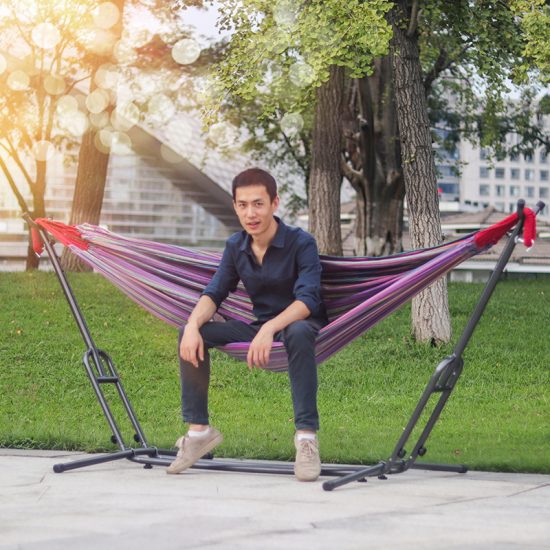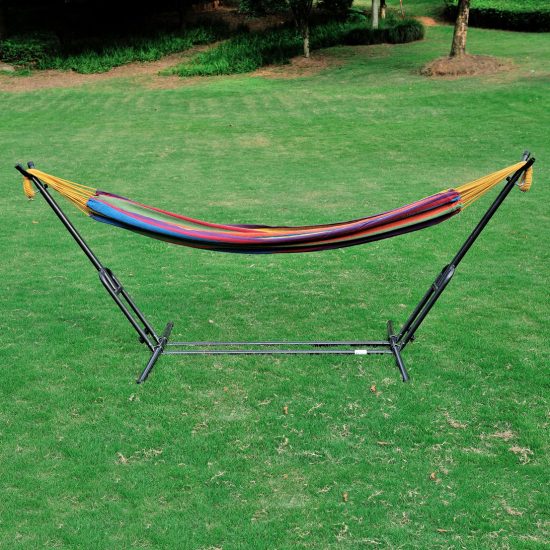If you’re new to hammock camping, here are some beginner tips to help you get started:
- Choose the Right Hammock: Invest in a quality camping hammock that suits your needs. Look for hammocks made from durable materials, with a sufficient weight capacity to support your body weight. Consider the size and length of the hammock as well, ensuring it provides enough space for you to lie comfortably.
- Practice Setting Up Your Hammock: Before your camping trip, practice setting up your hammock in your backyard or a nearby park. Familiarize yourself with the suspension system, straps, and knots. This will help you become more efficient and confident when setting up your hammock at the campsite.
- Find Suitable Anchor Points: Look for sturdy and appropriately spaced trees to use as anchor points for your hammock. Ensure the trees are alive, healthy, and capable of supporting your weight. Avoid using fragile or dead trees, as they may pose a risk of falling or causing damage to the environment.
- Use Tree Straps: Instead of tying ropes directly around trees, use tree straps or webbing to protect the trees’ bark and minimize damage. Tree straps distribute the weight more evenly and reduce the impact on the trees.
- Achieve Proper Hang Angle: To ensure a comfortable sleeping position, aim for a 30-degree hang angle. This angle provides a good balance between comfort and stability. Adjust the height and tension of your hammock accordingly to achieve the desired hang angle.
- Consider a Bug Net and Rainfly: Depending on the camping location and time of year, consider investing in a bug net and rainfly for your hammock. A bug net will protect you from insects, while a rainfly will provide shelter from rain and wind. These accessories can greatly enhance your comfort and overall camping experience.
- Insulation and Underquilts: In colder weather, insulation is crucial to staying warm in a hammock. Use an underquilt or a sleeping pad to insulate the bottom of your hammock, as the airflow beneath can cause you to feel cold. Ensure your sleeping bag is suitable for the temperature range you expect to encounter.
- Keep Essentials Within Reach: Use gear loops or small pouches attached to your hammock’s suspension system to keep essential items like a headlamp, water bottle, or small personal belongings easily accessible throughout the night.
- Practice Leave No Trace Principles: As with any camping activity, practice Leave No Trace principles. Minimize your impact on the environment by avoiding damage to vegetation, disposing of waste properly, and leaving your campsite as you found it.
- Take Safety Precautions: Always prioritize safety when hammock camping. Make sure your hammock is securely set up and regularly check the suspension system for any signs of wear. Be cautious when entering and exiting the hammock to prevent accidents.
By following these tips, you’ll be well on your way to enjoying a comfortable and enjoyable hammock camping experience. Remember, practice makes perfect, so don’t be discouraged if it takes a few attempts to get everything just right.


